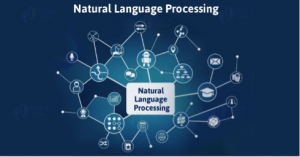Module 3: Reading and Videos Part 3

Natural Language Processing
With the rise of the internet and social media, a large amount of data is increasingly available for marketing decision-making. About 25 percent of the data is structured and directly usable by most statistical analysis methods.
- Recall that structured data consists of records organized into rows and columns
- Unstructured data (more than 75 percent of emerging data) does not have a predefined structure and does not fit well into a table format
- Moreover, unstructured data requires further processing before analysis
- It must be converted into structured data first
- Unstructured data is increasingly used to develop marketing strategies
Using natural language processing to identify patterns in text data
Social media posts, product reviews, emails, customer service call records, sales calls, and chatbots are some common sources of text data. Natural language processing (NLP) is a branch of artificial intelligence (AI) used to identify patterns by reading and understanding meaning from human language. Companies use NLP to analyze and interpret both internal and external data
- NLP can be used by marketers to extract information that can be applied in both proactive and reactive ways, including responding to customer comments and complaints, and building on product preferences. Ultimately, NLP can help companies, reduce potential conflicts, and prioritize the level of urgency when responding to concerns and opportunities.
Marketers use NLP to understand the “what,” “how,” “when,” and “why” of customer and market behavior. They can use NLP to extract underlying intentions, beliefs, and attitudes behind the behavior.
Companies can analyze text data records to learn more about what customers want and need by
- optimizing inventory
- engaging customers in marketing campaigns
- developing new products
- simplifying a customer’s experience
- gathering input on new product features and benefits
- improving customer relationships, just to name a few
How Is Text Analytics Applied?
Text analytics is an NLP technique that includes the following four step process:
- Text acquisition and preparation
- Text data preprocessing through cleaning, categorizing, and coding
- Text exploration
- Text modeling
Step 1: Text Acquisition and Aggregation
The first step in text analytics is to determine the marketing analyst’s business question. Understanding the question dictates the text data that needs to be acquired. Once the question is defined, the analyst collects text data using multiple sources. Once the text data is collected, it needs to be combined and uploaded into the text analytics software program
Step 2: Text Preprocessing
The second step includes processing and cleaning the data. Preprocessing is necessary as the data often contains punctuation, variations in capital and lowercase letters, or special characters such as % or @. N This step reduces noise in the data, creates consistency, and removes special characters. It prepares data for exploration and modeling.
Step 3: Text Exploration
Text exploration consists of reviewing common words, type of content, and relationships using basic statistics.
Step 4: Text Modeling
In text modeling, the preprocessed data is used to build models such as topic modeling, sentiment analysis, text classification.
Topic modeling enables the analyst to discover hidden thematic structures in the text
Sentiment analysis is a measure of emotions, attitudes, and beliefs
Text classification creates categories or groups associated with the content
The internet has made it easy for customers to quickly share their opinions. Many times, detailed feedback contains contradictory or different opinions, known as sentiment polarity. Customers might share different sentiments for different features. Features, such as product quality, customer service, or the store, are known as aspects – they capture the “what” or main topic for which the opinion is expressed. Typical sentiment analysis would assign one score for the review. But a single score would be inaccurate given the mixed feelings. Here, it is best to use aspect-based sentiment analysis Using aspect-based sentiment analysis, companies can capture a more granular understanding of what customers like and dislike. This will help marketers make changes to improve customer experiences.

